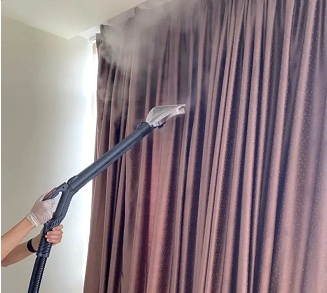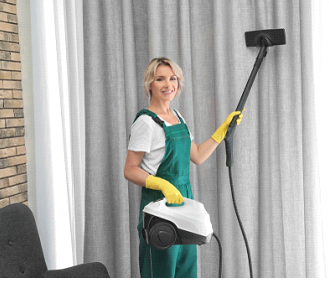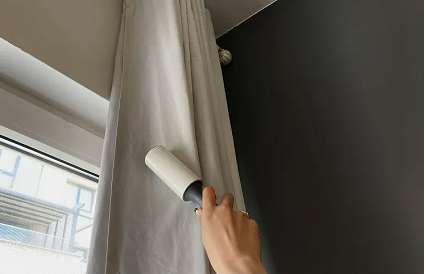Durable and Sustainable Fabric Choices | What are the options?

Today, we’ll delve into a vital aspect of home interiors: furnishing and fabric finishes, including curtains and specific fabric wall treatments. This is important for anyone considering the use of fabric in their home decor.
When selecting materials, it’s crucial to prioritise not only aesthetic appeal but also ease of maintenance. Opt for fabrics that resist fading over time and are effortless to clean. Given the common occurrence of accidents such as spills and stains, maintaining a clean and fresh appearance is paramount to preserving the look and feel of your home furnishings!
We’ll equip you with the necessary knowledge to identify the fabrics you should seek out or request from your carpenters for your furnishings.
What qualities we need to look for specifically and ask fabric vendors about are:
⦁ Stain Resistance
⦁ Ease of Cleaning
⦁ Fade resistance
⦁ And how they react to moisture
When selecting furniture such as sofas for your lounge and fabric for dining and kitchen chairs, it’s wise to consider synthetic materials. Synthetic fabrics include a broad range of man-made textiles crafted from chemical compounds rather than natural fibers. Among these options, polyester stands out for its durability, resistance to wrinkles, and ability to retain color, making it a popular choice for both clothing and home furnishings.

Nylon, another widely used synthetic, offers strength and elasticity, making it suitable for activewear, hosiery, and upholstery.

Polypropylene, also known as Olefin, is valued for its resistance to moisture and stains, commonly found in outdoor fabrics and carpets.
Acrylic, known for its wool-like softness and warmth, serves as a substitute for wool in blankets, clothing, and upholstery.
Vinyl upholstery fabric is shiny and often has a glossy finish. It’s also highly wipe-proof, making it resistant to spills and easy to clean with a damp cloth. Vinyl is commonly used in commercial settings like restaurants and bars, but it’s also suitable for residential furniture, particularly in high-traffic areas or homes with children and pets.
Apart from synthetic fibres, Canvas is also an excellent choice for furnishing. Canvas is typically made from natural fibres, such as cotton or linen, rather than synthetic materials. It’s a strong, durable, and tightly woven fabric known for its warm, natural appeal. While canvas can be treated with coatings or finishes for specific purposes, such as water resistance, the base material itself is natural. However, there are synthetic fabrics that mimic the texture and appearance of canvas, but traditional canvas is generally made from natural fibres.

What fabrics should typically not be used in furniture upholstery:
Fabrics like silk, while luxurious, may lack durability and be challenging to clean, as they are prone to water stains and damage from sunlight and abrasion. Velvet, with its softness and elegance, can also pose challenges due to its tendency to attract dust and pet hair, as well as difficulties in removing spills without leaving marks. Linen, known for its casual look, wrinkles easily and may shrink or fade over time, making it less than ideal for households seeking low-maintenance options. Tapestry fabrics, featuring intricate designs, can be challenging to clean due to their thickness and texture, potentially making stain removal a daunting task. Suede, with its luxurious feel, requires special care to avoid water damage and stains.
Rayon is also not the best choice for home furnishing due to its relatively low durability and sensitivity to moisture and heat. It can wrinkle, shrink, and lose strength over time, making it less suitable for high-traffic areas or items that require frequent cleaning. Additionally fabrics like rayon may require special care during washing and are not as resistant to wear and tear as other synthetic or natural fibres.
Before making a decision, it’s important to assess how the fabric reacts to touch and weight, observing any changes in appearance such as shading or appearance of soiling.

FEATURE WALL FABRICS

Two basic techniques exist for affixing fabric to walls: adhesive and mechanical. In the adhesive method, liquid glue is applied to the wall using a roller, effectively adhering the fabric like wallpaper and smoothing it out. Next, the mechanical approach involves outlining the borders of each wall with a tacking strip, such as narrow strips of wood secured into the studs, and then attaching the fabric onto these strips using tacks, staples or nails.
For feature walls that require both easy cleaning and fade resistance, several fabric options can be suitable such as Vinyl which is again an excellent fabric offering durability, fade resistance, and easy maintenance. Vinyl is water-resistant and can be wiped clean with a damp cloth, making it ideal for high-traffic areas or spaces prone to spills and stains.
Polyester blends are often treated to be fade-resistant and are relatively easy to clean, making them suitable for feature walls. These fabrics come in a variety of textures and patterns, allowing for versatile design options while providing durability and longevity.
Laminated fabrics feature a protective coating that makes them resistant to stains, spills, and fading. They are easy to wipe clean with a damp cloth and come in a variety of colors and patterns, making them suitable for feature walls in both residential and commercial spaces.
Easy-to-Maintain Curtain Fabrics
Polyester stands out as an excellent option for fabric curtains due to its affordability, durability, and easy maintenance. Unlike sheer fabric, polyester curtains do not require frequent cleaning, as air fluffing can effectively remove dust. However, when washing is necessary, cold water should be used, and drying can be done on a low heat setting. One advantage of polyester curtains is their resistance to wrinkling, eliminating the need for ironing before rehanging. It’s worth noting that polyester is flammable and absorbs odors, so caution should be exercised to avoid placing it in the kitchen.
Nylon curtains are similar to polyester in terms of durability and ease of cleaning. They can be machine washed in cold water and dried on a low heat setting. Nylon curtains are also resistant to wrinkles and can maintain their shape well over time.
Blackout curtains are highly effective at blocking out sunlight, making them a popular choice for bedrooms where light control is essential. When it comes to cleaning blackout curtains, steam cleaning is a convenient option that allows for cleaning without the need to take them down. Begin by steaming from top to bottom, ensuring the steamer is kept at a distance to prevent the curtains from becoming wet. Avoid using a dryer for blackout curtains and always refer to the care instructions before cleaning to ensure longevity and effectiveness.

Steam Cleaning Thick Curtains
Sheer fabric, lastly, known for its lightweight composition, is a popular choice for curtains due to its airy and delicate appearance. However, it’s important to note that dirt accumulation can lead to permanent fading of its colours, so there is a need for regular cleaning with sheer fabrics unfortunately. This fabric is particularly prone to snagging when wet, so it’s best to opt for gentle hand washing and giving specific care instructions to dry cleaners.
Dirty and dusty drapes and curtains not only detract from the appearance of a room but can also pose health concerns, especially for people with allergies. While professional dry-cleaning is recommended for certain types of drapes, such as wool or other more heavy fabrics, many fabrics can be safely washed by hand or machine, or simply brushed and vacuumed to remove dust and grime. Did you know that to clean curtains, you don’t have to always take them down and give them to the dry-cleaners?

For weekly maintenance, utilize the upholstery attachment on your vacuum cleaner to effectively remove dust and allergens from your drapes. Regular vacuuming not only helps in reducing allergies but also prevents the accumulation of pet hair. If you have pets, use a lint brush or the sticky side of duct tape to lift stubborn pet hair during vacuuming. Leaving layers of pet hair on drapery can lead to discoloration over time due to the oils from your pet’s coat.

We hope you enjoyed this blog discussing easy-to-maintain fabrics in interior design. Stay tuned for more upcoming blogs, where we’ll delve into achieving functionality, user-friendliness, and aesthetic appeal in your home interiors!


